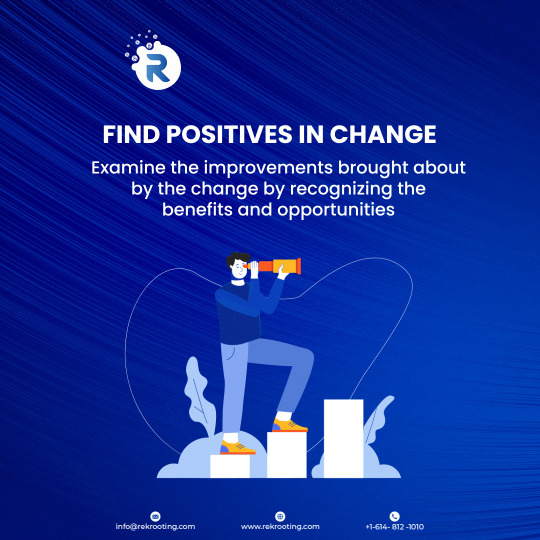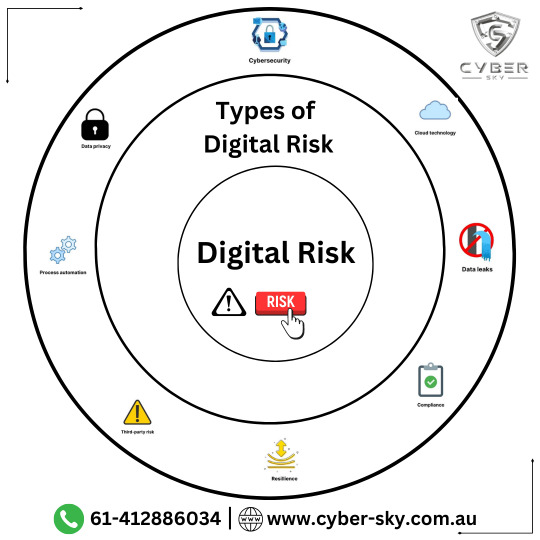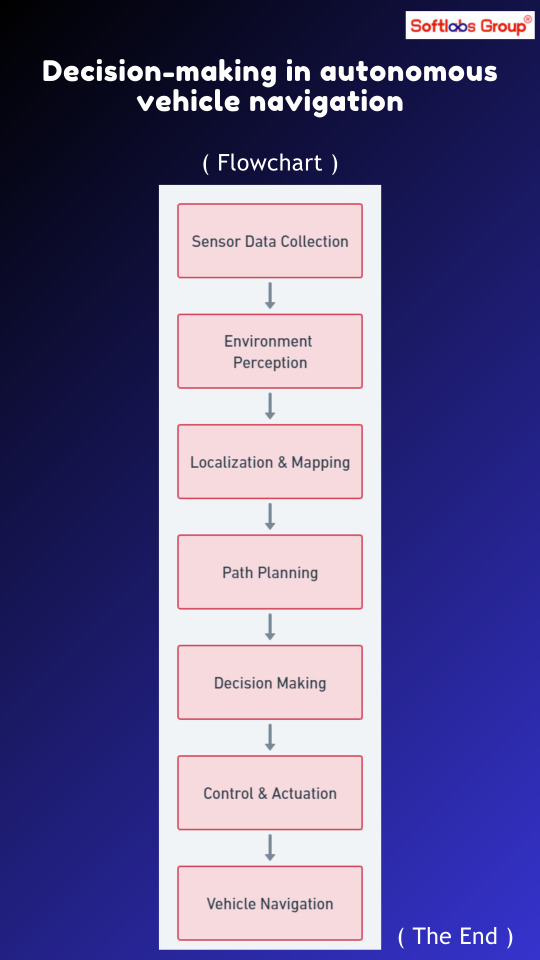#RiskAssessment
Text





What is HR Risk Management: A Detailed Guide
In business, risk cannot be totally removed. By anticipating and preparing for any failures, risk management aims to minimize consequences.
All aspects of an organization's operations must incorporate risk management, but HR should focus on the risks for which it has particular responsibility.
Read the article on HR risk management to know more. Please feel free to share your feedback and questions. We would love to hear from you.
5 notes
·
View notes
Text
youtube
#youtube#AboveTheLaw#GunViolence#CriminalMindset#LegalAccountability#LawEnforcement#CrimePrevention#PublicSafety#JusticeSystem#GunControl#ViolentBehavior#LawAndOrder#SocialResponsibility#LegalConsequences#GunLaws#RiskAssessment#CriminalJustice#schoolshooter#schoolshootout#NarcissisticShooters#PsychologyofViolence#DarkPassenger#Narcissism#ShooterMindset#MentalHealth#KillersMind#CrimePsychology#InsideTheShooter#MassShootings#CriminalMinds
5 notes
·
View notes
Text

Start investing today with Mentor Wealth and reap satisfying results on investments.
Call us: 70119 89635
#sip#systematicinvestmentplan#mutualfunds#mutualfundssahihai#mutualfundsinvestment#mutualfundsindia#mutualfundsip#invest#investing#investment#investments#investor#investors#risk#riskmanagement#riskassessment#riskfree#risktaker#riskyplay#multicapfunds#tatamutualfund#india#indian#professionalservices#professional#nippon#nipponindiamutualfund#investing101#investingforbeginners#investingtips
21 notes
·
View notes
Text
Human Factors Engineering (HFE): Making Oil and Gas Facilities Safer and More Efficient
Human Factors Engineering (HFE) is the application of scientific principles to the design of products, systems, and environments to optimize human performance and safety. HFE is particularly important in the oil and gas industry, where workers face a variety of hazards and where even a small mistake can have catastrophic consequences.
There are many ways that HFE can be used to improve the design of oil and gas facilities. For example, HFE can be used to:
Design controls that are easy to see and reach, and that are clearly labeled.
Design layouts that minimize the risk of accidents and injuries.
Provide workers with the information and training they need to perform their jobs safely and efficiently.
Create a positive work environment that supports worker well-being.
Here are a few specific examples of how HFE has been used to improve the design of oil and gas facilities:
Color-coding pipes and valves to make it easier for workers to identify them.
Using non-slip surfaces to reduce the risk of falls.
Designing control panels that are easy to use and that minimize the risk of errors.
Providing workers with clear and concise instructions on how to perform their jobs safely.
Creating break rooms and other spaces where workers can relax and socialize.
By incorporating HFE principles into the design of oil and gas facilities, companies can improve safety, efficiency, and worker well-being.
Here is a more detailed example of how HFE was used to improve the design of an oil and gas facility:
In one case, an oil and gas company was experiencing a high rate of accidents involving workers tripping and falling on slippery surfaces. The company hired an HFE consultant to help them identify and address the problem.
The HFE consultant conducted a site visit and interviewed workers to learn more about the problem. The consultant found that the slippery surfaces were caused by a combination of factors, including oil and grease spills, rainwater, and condensation.
The consultant recommended a number of solutions to the company, including:
Installing non-slip surfaces in areas where workers are likely to walk.
Improving drainage in areas where rainwater and condensation accumulate.
Providing workers with training on how to avoid slips and falls.
The company implemented the consultant's recommendations, and the rate of accidents involving slips and falls decreased significantly.
This is just one example of how HFE can be used to improve the safety of oil and gas facilities. HFE can also be used to improve efficiency and worker well-being. For example, HFE can be used to design workstations that are ergonomically correct and that minimize fatigue. HFE can also be used to develop training programs that are effective and engaging.
Here are some additional benefits of using HFE in the oil and gas industry:
Reduced costs: HFE can help to reduce the costs associated with accidents and injuries.
Improved productivity: HFE can help to improve productivity by reducing errors and improving efficiency.
Increased employee satisfaction: HFE can help to create a safer and more comfortable work environment, which can lead to increased employee satisfaction.
Overall, HFE is a valuable tool that can be used to improve safety, efficiency, and worker well-being in the oil and gas industry.
Conclusion
HFE is a valuable tool that can be used to improve safety, efficiency, and worker well-being in the oil and gas industry. By incorporating HFE principles into the design of oil and gas facilities, companies can create a safer and more productive work environment for their employees.
#human factor engineering#oilandgas#chemical industry#crude oil#health and safety#industrial safety animation#petrol#refinery#riskassessment#riskmanagement#engineering
5 notes
·
View notes
Text
Best Customized Bankable Project Report For Bank Loan in 2023
Best Customized Bankable Project Report For Bank Loan in 2023
A project report is a crucial document required by banks to grant loans to businesses or individuals. A well-crafted project report can make or break your loan application. It is a comprehensive document that provides detailed information about the proposed project, its feasibility, and its expected outcomes. It is essential to customize the project report to fit the specific requirements of the lending institution to increase the chances of loan approval.
#BusinessProjectReport#ProjectManagement#MarketResearch#FinancialAnalysis#BusinessStrategy#SWOTAnalysis#BusinessPlan#MarketingPlan#ProjectProposal#FeasibilityStudy#RiskAssessment#InvestmentAnalysis#BusinessDevelopment#CorporateStrateg#PerformanceAnalysis
2 notes
·
View notes
Text

𝐂𝐲𝐛𝐞𝐫𝐬𝐤𝐲 - 𝐃𝐢𝐠𝐢𝐭𝐚𝐥 𝐑𝐢𝐬𝐤 - 𝐓𝐡𝐞 𝐃𝐢𝐠𝐢𝐭𝐚𝐥𝐢𝐳𝐚𝐭𝐢𝐨𝐧 𝐨𝐟 𝐑𝐢𝐬𝐤 𝐌𝐚𝐧𝐚𝐠𝐞𝐦𝐞𝐧𝐭
The digitalization of risk management refers to the process of incorporating digital technologies, data analytics, and automation into the various aspects of identifying, assessing, monitoring, and mitigating risks within an organization.
To know more visit at
https://cyber-sky.com.au and 📲 + 61-412886034
Follow us @cybersky
Digitalization impacting on risk management:
☑ Data Collection and Analysis
☑ Risk Assessment
☑ Automation
☑ Monitoring and Early Warning Systems
☑ Cybersecurity
☑ Machine Learning and AI
#Cyberattacks#cybersecurity#digitalization#riskmanagement#dataprotection#riskassessment#risk#digital#techno
1 note
·
View note
Text
#InternalAuditServices#InternalAuditServicesInUAE#INterAuditServices#finance#AuditServices#AuditServicesInUAE#InternalAuditorServices#InterAuditorServicesinuae#InternalAuditor#RiskAssessmentServicesInUAE#RiskAssessmentServices#RiskAssessment#UAE#Dubai#NSKTGLOBAL
2 notes
·
View notes
Text
Risk Ready: Preparing for Uncertainty with Cyber Security Risk Assessment Tools
0 notes
Text
Discover how the 10th Edition of API Spec Q1 reshapes organizational mindsets in the oil and gas industry. Explore the transformative impact on quality management systems and industry standards. Unlock insights to adapt and thrive in the evolving landscape.
#vegasconsulting#apispecq1#apispecq110thedition#apispecq1certification#apicompliance#apistandards#qualitymanagementsystem#apiq1#qms#compliance#safety#riskmanagement#riskassessment#suppliermanagement#oilandgas
0 notes
Text

Explore the decision-making process in autonomous vehicle navigation with our informative flowchart. Follow steps including perception, localization, mapping, path planning, and control. Simplify the complex process of ensuring safe and efficient navigation for autonomous vehicles. Perfect for engineers, researchers, and enthusiasts in autonomous driving technology. Stay informed with Softlabs Group for more insights into the future of transportation!
0 notes
Text
Safeguarding Privacy: How To Effectively Utilize Privacy Impact Assessments in Your Business
Where data flows freely and privacy concerns loom large, businesses in the UK face an imperative: safeguarding the personal information of their customers and employees. One powerful tool in this endeavor is the Privacy Impact Assessment (PIA), a systematic process for identifying and mitigating privacy risks associated with the collection, use, and disclosure of personal data.
PIAs are not…

View On WordPress
#compliance#Cybersecurity#DataHandling#dataprivacy#dataprotection#datasecurity#gdpr#informationsecurity#lexdexsolutions#PIA#privacyawareness#PrivacyByDesign#PrivacyMatters#PrivacyPolicy#PrivacyRisks#RegulatoryCompliance#RiskAssessment#StakeholderEngagement#UKBusiness#personaldata#privacy
0 notes
Text

Where can you invest your money?
The key to answering this common & crucial question is to be aware of your investor status and have a clear and extensive understanding of your investment objectives.
Call us now: 9910133556
#investment#money#risk#riskmanagement#riskassessment#investor#investing#mutualfunds#mutualfundssahihai#mutualfundsinvestment#investing101#investingtips#investingforbeginners#finance#accounting#economy#stock market#us politics#business#earnings#startup#markets#entrepreneur
15 notes
·
View notes
Text
Unveiling the Potential: Purv Flexipack IPO - A Game-Changer for Investors

Understanding Purv Flexipack: The Company Behind the IPO
Purv Flexipack, a leading player in the packaging industry, has built a reputation for excellence through its commitment to quality, innovation, and customer satisfaction. With a diverse range of packaging solutions catering to various industries such as food and beverages, pharmaceuticals, and consumer goods, the company has established itself as a preferred partner for businesses worldwide.
Unveiling the IPO: A Gateway to Growth
The decision to go public through an IPO marks a significant milestone in Purv Flexipack’s journey. It not only provides the company with access to capital for expansion and investment but also enhances its visibility and credibility in the market. For investors, the Purv Flexipack IPO represents an opportunity to become part of a promising venture poised for growth and success.
Key Factors Driving Investor Interest
1. Market Potential and Demand
The packaging industry is witnessing robust growth driven by factors such as increasing consumerism, e-commerce proliferation, and sustainability concerns. Purv Flexipack, with its innovative solutions and customer-centric approach, is well-positioned to capitalize on these trends, translating into promising revenue prospects for investors.
2. Innovation and Technological Advancements
Purv Flexipack’s commitment to innovation sets it apart in a competitive market landscape. By leveraging cutting-edge technologies and continuous R&D efforts, the company stays ahead of the curve, offering solutions that meet evolving customer needs and industry standards. This focus on innovation not only fosters growth but also enhances the company’s resilience against market disruptions.
3. Strong Financial Performance
A track record of strong financial performance further bolsters investor confidence in Purv Flexipack. With sustainable revenue growth, healthy margins, and efficient cost management, the company demonstrates its ability to generate value for shareholders. The IPO proceeds are expected to fuel further expansion and operational enhancements, driving future profitability.
Assessing Risks and Mitigation Strategies
While the Purv Flexipack IPO presents compelling opportunities, prudent investors must also consider potential risks. Factors such as market volatility, regulatory challenges, and competitive pressures could impact the company’s performance and stock valuation. However, Purv Flexipack’s proactive risk management strategies, diversified product portfolio, and strong market position mitigate these risks to a considerable extent, instilling confidence in investors.
Conclusion: Seizing the Opportunity
In conclusion, the Purv Flexipack IPO represents a unique opportunity for ipobrains investors to participate in the growth story of a dynamic and innovative company. With a solid foundation, market leadership, and a clear growth trajectory, Purv Flexipack is poised to create significant value for its stakeholders. By understanding the market dynamics, assessing risks, and aligning investment strategies, investors can position themselves to reap the rewards of this exciting offering. As the IPO journey unfolds, staying informed and proactive will be key to maximizing returns and unlocking the full potential of this investment opportunity.
#PurvFlexipackIPO#InvestmentOpportunity#IPOBrains#PackagingIndustry#Innovation#MarketPotential#FinancialPerformance#RiskAssessment#InvestmentStrategy#GrowthStory
1 note
·
View note
Text
Empowering Insurers: Gridlines Compliance Solutions
Gridlines offers efficient customer onboarding and compliance solutions tailored for insurers. With a focus on seamless onboarding, fraud prevention analytics, and risk assessment, our APIs empower insurers to navigate regulatory complexities effortlessly. Our solutions assist with essential risk assessment and KYC processes, crucial for maintaining compliance within the insurance industry. Insurance companies can track regulatory changes, simplify KYC procedures, and ensure compliance with updated regulations.

Gridlines provides industry-specific expertise in insurance compliance, ensuring that insurers stay updated with evolving regulatory requirements. Our scalable API infrastructure is designed to support the growing needs of insurance businesses, offering flexibility and reliability. We provide dedicated support for seamless implementation and integration, ensuring a smooth transition to our solutions. With Gridlines, insurers can enhance data security and adapt to evolving industry needs, achieving regulatory compliance with confidence.
#InsuranceTech#InsurTech#InsuranceIndustry#ComplianceSolutions#FraudPrevention#KYCProcess#RegulatoryCompliance#CustomerOnboarding#APIsForInsurance#RiskAssessment#DataSecurity
0 notes
Text
Leveraging Business Impact Assessments for Enhanced Business Continuity
In the fast-paced and interconnected world of modern business, resilience and adaptability are virtues and necessities. As companies navigate the complexities of global markets, technological advancements, and unforeseen disruptions, the importance of a robust Business Continuity Program (BCP) becomes undeniable. At the heart of such a program lies a critical tool: the Business Impact Assessment (BIA). This comprehensive evaluation not only fortifies your BCP but also offers a plethora of strategic advantages, ensuring your business remains resilient in the face of adversity.
The Strategic Edge of Business Impact Assessments
A Business Impact Assessment is a systematic process that predicts the potential effects of interruptions to business operations and identifies the operational and financial impacts of these disruptions. By integrating BIA into your Business Continuity Program, you can unlock a myriad of benefits, enhancing not just your resilience but also your strategic decision-making capabilities.
Informed Strategic Planning and Risk Management
A well-executed Business Impact Assessment provides invaluable insights into the critical functions of your business, highlighting areas of vulnerability and potential financial and operational impacts of disruptions. This knowledge empowers businesses to develop targeted risk management strategies, prioritise resource allocation, and make informed decisions that safeguard the company's core operations and objectives.
Enhanced Regulatory Compliance and Stakeholder Confidence
In many industries, regulatory bodies mandate the implementation of comprehensive Business Continuity Plans, including BIAs. By adhering to these requirements, businesses not only avoid potential legal and financial penalties but also demonstrate a commitment to resilience and reliability. This proactive approach to risk management significantly boosts confidence among stakeholders, including investors, customers, and employees, fostering a reputation for stability and trustworthiness.
Optimisation of Recovery Time Objectives
A critical output of the Business Impact Assessment is the identification of Recovery Time Objectives (RTOs) for key business functions. These benchmarks, which specify the maximum acceptable downtime for each critical function, are instrumental in developing recovery strategies that minimise operational disruptions and financial losses. By optimising RTOs, businesses can ensure a swift and efficient return to normal operations, preserving customer service levels and market position.
Facilitation of Business Continuity and Disaster Recovery Planning
The insights gleaned from a BIA are foundational to the development of Business Continuity and Disaster Recovery Plans. By understanding the potential impacts of disruptions on critical business functions, companies can devise effective strategies and response plans that ensure the continuity of operations. This not only minimises downtime but also aids in the quick restoration of services, maintaining business integrity in the face of crises.
Overcoming Challenges in BIA Implementation
While the benefits of a Business Impact Assessment are manifold, the process of implementation can present challenges. These range from resource constraints and the complexity of business operations to the dynamic nature of business environments and the need for stakeholder engagement. However, by adhering to best practices such as securing executive support, assembling cross-functional teams, ensuring regular updates, and maintaining effective communication with stakeholders, businesses can navigate these challenges successfully.
Future Trends in Business Impact Assessments
As businesses evolve, so too does the landscape of Business Impact Assessments. Emerging trends point towards the integration of advanced technologies such as Artificial Intelligence (AI) and Machine Learning (ML) to enhance the predictive capabilities of BIAs. These technologies promise to offer deeper insights into potential disruptions and their impacts, enabling businesses to anticipate and mitigate risks with unprecedented precision.
Furthermore, the scope of BIAs is expanding to encompass not just traditional operational risks but also emerging threats such as cybersecurity breaches, data privacy concerns, and environmental sustainability issues. This holistic approach ensures that businesses are prepared to face not only current challenges but also those on the horizon.
The BIA Process: A Step-by-Step Guide
Cybra Security’s BIA process can be broken down into several key steps, each crucial for a comprehensive assessment:
Initiation:
The process begins with defining the scope and objectives of the BIA. This involves identifying the key stakeholders, setting the boundaries for the assessment, and allocating resources.
Information Gathering:
This step involves collecting detailed information about all business functions, processes, and dependencies. This can include interviews with department heads, review of process documentation, and analysis of financial data.
Analysis:
With the gathered information, businesses can analyse which functions are critical to the organisation's survival and what the potential impact of their disruption might be. This includes considering both direct impacts, such as financial loss, and indirect impacts, such as reputational damage.
Assessment of Downtime Tolerance:
This involves determining how long each critical function can be offline before it causes significant harm to the business. This concept, known as the Maximum Acceptable Outage (MAO), is pivotal in prioritising recovery efforts.
Development of Recovery Strategies:
Based on the analysis, businesses can develop strategies to mitigate the impact of disruptions. This can range from creating redundant systems to diversifying suppliers.
Implementation and Testing:
The devised strategies need to be implemented and regularly tested to ensure their effectiveness. This might include drills, simulations, and updates based on changing business environments.
Maintenance and Review:
The BIA is not a one-time activity but a continuous process that should be regularly reviewed and updated to reflect changes in the business environment, operations, or objectives.
Conclusion
In conclusion, integrating a Business Impact Assessment into your Business Continuity Program offers a strategic advantage that extends beyond mere risk mitigation. From informed decision-making and enhanced regulatory compliance to optimised recovery strategies and proactive risk management, the benefits of a BIA are comprehensive and multifaceted. By embracing this tool, businesses can not only navigate the uncertainties of the modern business landscape with confidence but also position themselves for sustained growth and success in an ever-evolving world.
#BusinessImpactAssessment#BusinessContinuityProgram#RiskManagementStrategies#BusinessResilience#RiskAssessment
0 notes